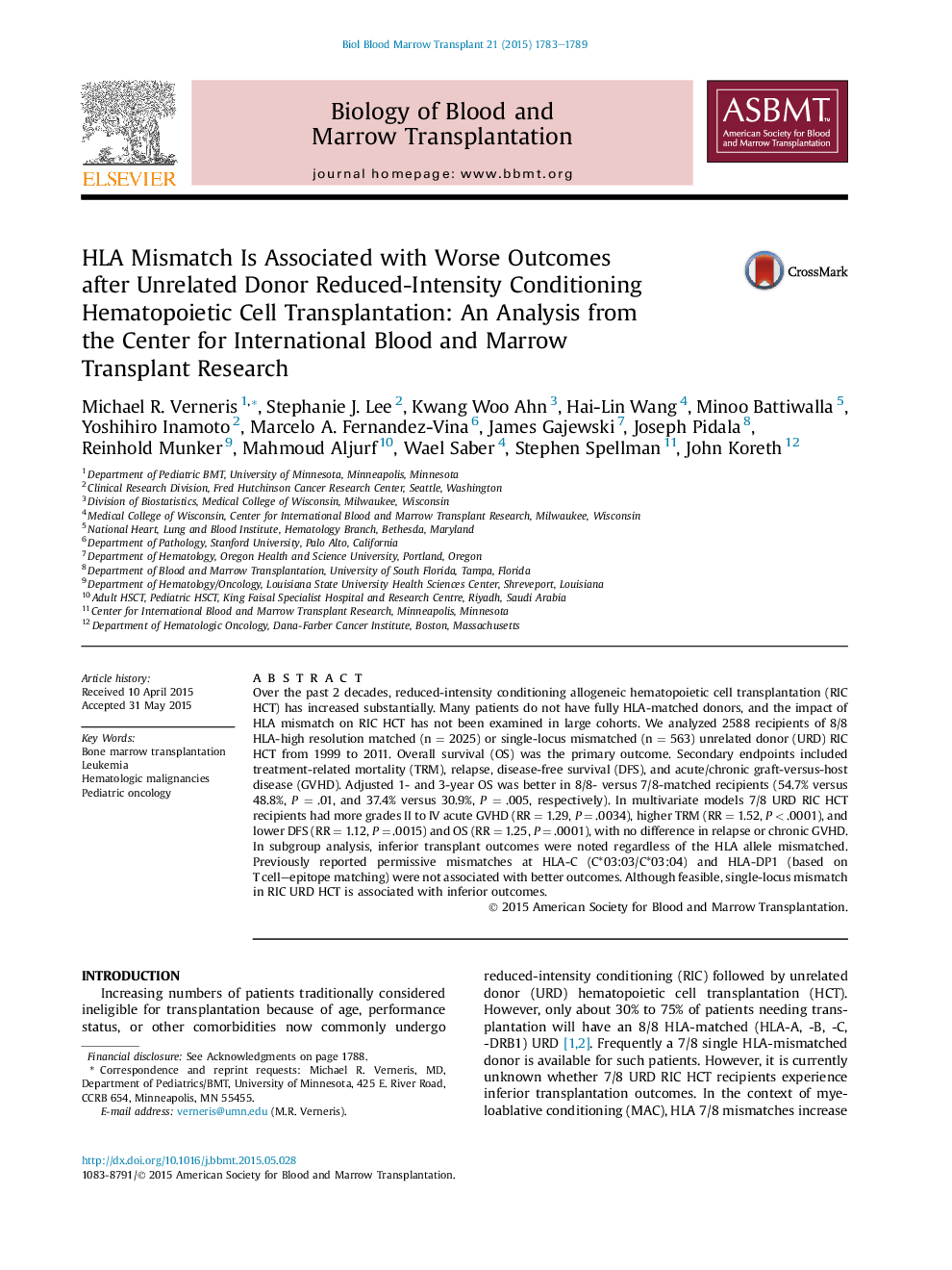| Article ID | Journal | Published Year | Pages | File Type |
|---|---|---|---|---|
| 2101318 | Biology of Blood and Marrow Transplantation | 2015 | 7 Pages |
Abstract
Over the past 2 decades, reduced-intensity conditioning allogeneic hematopoietic cell transplantation (RIC HCT) has increased substantially. Many patients do not have fully HLA-matched donors, and the impact of HLA mismatch on RIC HCT has not been examined in large cohorts. We analyzed 2588 recipients of 8/8 HLA-high resolution matched (n = 2025) or single-locus mismatched (n = 563) unrelated donor (URD) RIC HCT from 1999 to 2011. Overall survival (OS) was the primary outcome. Secondary endpoints included treatment-related mortality (TRM), relapse, disease-free survival (DFS), and acute/chronic graft-versus-host disease (GVHD). Adjusted 1- and 3-year OS was better in 8/8- versus 7/8-matched recipients (54.7% versus 48.8%, P = .01, and 37.4% versus 30.9%, P = .005, respectively). In multivariate models 7/8 URD RIC HCT recipients had more grades II to IV acute GVHD (RR = 1.29, P = .0034), higher TRM (RR = 1.52, P < .0001), and lower DFS (RR = 1.12, P = .0015) and OS (RR = 1.25, P = .0001), with no difference in relapse or chronic GVHD. In subgroup analysis, inferior transplant outcomes were noted regardless of the HLA allele mismatched. Previously reported permissive mismatches at HLA-C (C*03:03/C*03:04) and HLA-DP1 (based on T cell-epitope matching) were not associated with better outcomes. Although feasible, single-locus mismatch in RIC URD HCT is associated with inferior outcomes.
Related Topics
Life Sciences
Biochemistry, Genetics and Molecular Biology
Cancer Research
Authors
Michael R. Verneris, Stephanie J. Lee, Kwang Woo Ahn, Hai-Lin Wang, Minoo Battiwalla, Yoshihiro Inamoto, Marcelo A. Fernandez-Vina, James Gajewski, Joseph Pidala, Reinhold Munker, Mahmoud Aljurf, Wael Saber, Stephen Spellman, John Koreth,
